 |
| Greens roller improves playability while reducing turf stress |
A recent blog post by fellow superintendent Chris Tritabaugh at Hazeltine National Golf Club, had me thinking about our own strategies for Bentgrass survival. I've included a link to his blog
here. I believe his main point in that post was that in order to provide the best conditions year round, sometimes less is more. Meaning give the turf a break so that we don't compound the stresses that the turf is already dealing with.
No matter what part of the country you live in, summer brings many challenges when trying to maintain Bentgrass putting greens. Heat, drought, excess rainfall, disease, foot traffic, and insects all conspire against the turf and has it fighting for it's life. We, the agronomy department, must do our part and carefully help the plant by giving it just what it needs, at just the right times. Solid tine aeration, timely fertilizer and pesticide applications, hand watering, and routine light applications of topdressing all help keep the turf healthy and ready to deal with the stresses of summer. Some other practices we utilize during the intense summer heat include: raising the height of cut, using smooth rollers, instead of grooved, on the cutting units, rolling greens instead of mowing, and using greens fans to improve air flow.
 |
| Light apps of sand dilute thatch, smooth and firm surface |
All of these practices are meant to lessen the amount of stress the plant is forced to endure. Once more seasonal weather sets in, the agronomy staff will make further adjustments and the practices employed will favor improving playability and not just survival.
 |
| Greens fans improve air flow |
 |
| Syringing allows staff to carefully manage soil moisture |








 Managing cart traffic during wet weather is a year-round task but it becomes especially important this time of year. Lower evaporation rates and reduced usage by the dormant turf prolongs the time it takes for excess water leave the soil. This means that after a rain, the ground stays wet for much longer than expected. Last week we received almost 2 inches of rain on Tuesday. During the summer we would have likely been back off the paths the next day, however, last week, the grounds department made the decision to keep carts on paths through Thursday. We had several golfers take their carts off paths and the tracks they created are still visible. The picture on the right is front left of #11 green. There are places all over the golf course that look like this. We ask for your cooperation when we are supposed to be on paths so that mud tracks like these can be prevented. The grounds department assesses the course conditions
Managing cart traffic during wet weather is a year-round task but it becomes especially important this time of year. Lower evaporation rates and reduced usage by the dormant turf prolongs the time it takes for excess water leave the soil. This means that after a rain, the ground stays wet for much longer than expected. Last week we received almost 2 inches of rain on Tuesday. During the summer we would have likely been back off the paths the next day, however, last week, the grounds department made the decision to keep carts on paths through Thursday. We had several golfers take their carts off paths and the tracks they created are still visible. The picture on the right is front left of #11 green. There are places all over the golf course that look like this. We ask for your cooperation when we are supposed to be on paths so that mud tracks like these can be prevented. The grounds department assesses the course conditions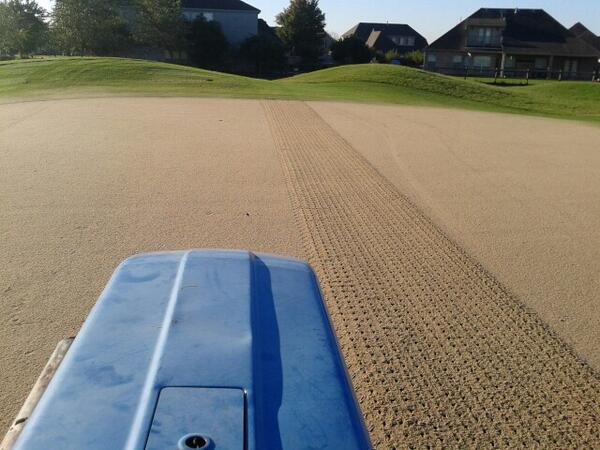 Last week, the grounds staff began deep-tining greens. The front nine greens and the practice facility were completed last week, leaving the back nine greens to be completed this week. A solid, 1/2" by 10" tine is used for this process to create deep channels filled with sand to promote long, healthy roots going into late fall. This time of year, as the days get shorter and the weather gets colder, the Bentgrass begins spending less of it's energy growing leaves and more of it's energy creating roots. We want to take advantage of this process by allowing clear pathways for those roots to grow. These holes, once created, are carefully filled with sand to ensure optimum water movement from the surface down to the drainage pipe underneath the root zone.
Last week, the grounds staff began deep-tining greens. The front nine greens and the practice facility were completed last week, leaving the back nine greens to be completed this week. A solid, 1/2" by 10" tine is used for this process to create deep channels filled with sand to promote long, healthy roots going into late fall. This time of year, as the days get shorter and the weather gets colder, the Bentgrass begins spending less of it's energy growing leaves and more of it's energy creating roots. We want to take advantage of this process by allowing clear pathways for those roots to grow. These holes, once created, are carefully filled with sand to ensure optimum water movement from the surface down to the drainage pipe underneath the root zone. 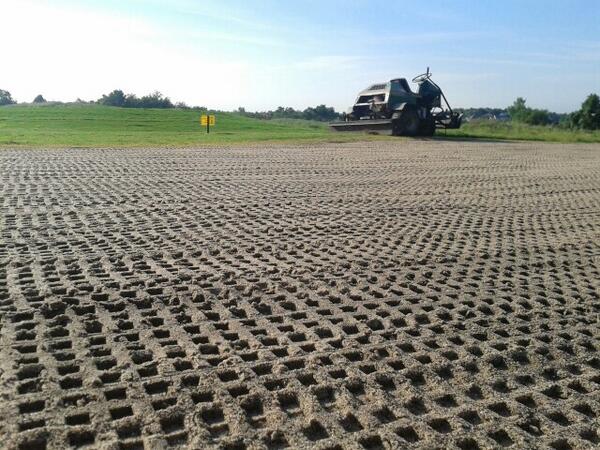



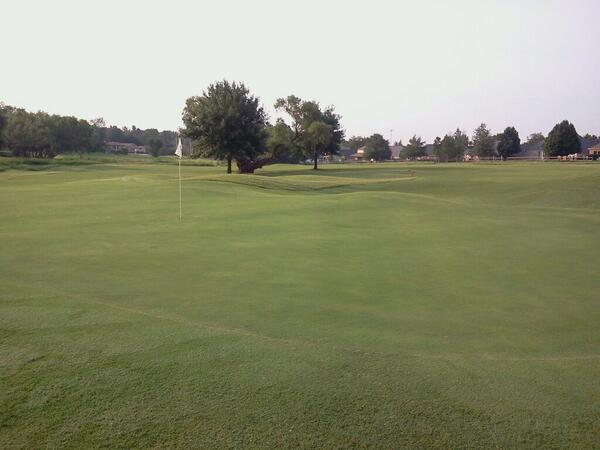

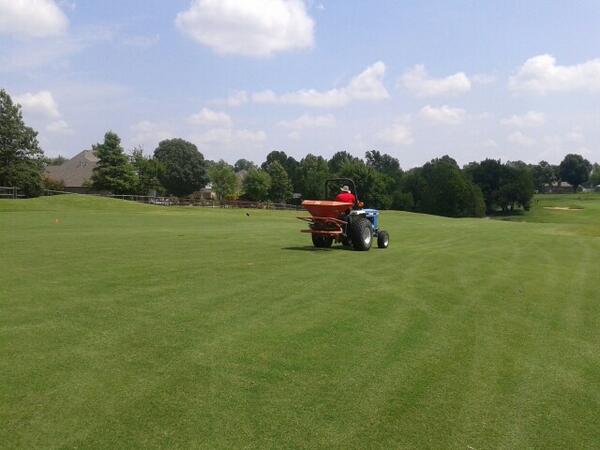

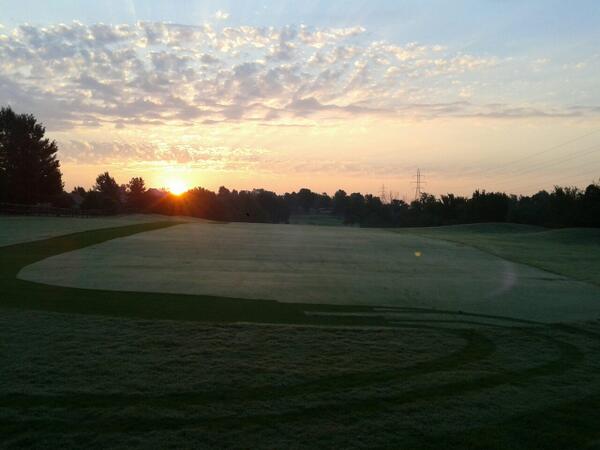


 Today the staff put the finishing touches on the new cart path drainage structure on #14. This new creek crossing has already been tested with some heavy rain events over the past few weeks and has performed as expected. Now that the new sod has been laid, the slopes will become more stable and the new structure should last for many years to come.
Today the staff put the finishing touches on the new cart path drainage structure on #14. This new creek crossing has already been tested with some heavy rain events over the past few weeks and has performed as expected. Now that the new sod has been laid, the slopes will become more stable and the new structure should last for many years to come. 










 It's hard to miss the cart path work near #14 forward tees that began this week. As of today the creek crossing is completely gone and carts are being diverted to the east.
It's hard to miss the cart path work near #14 forward tees that began this week. As of today the creek crossing is completely gone and carts are being diverted to the east. 




